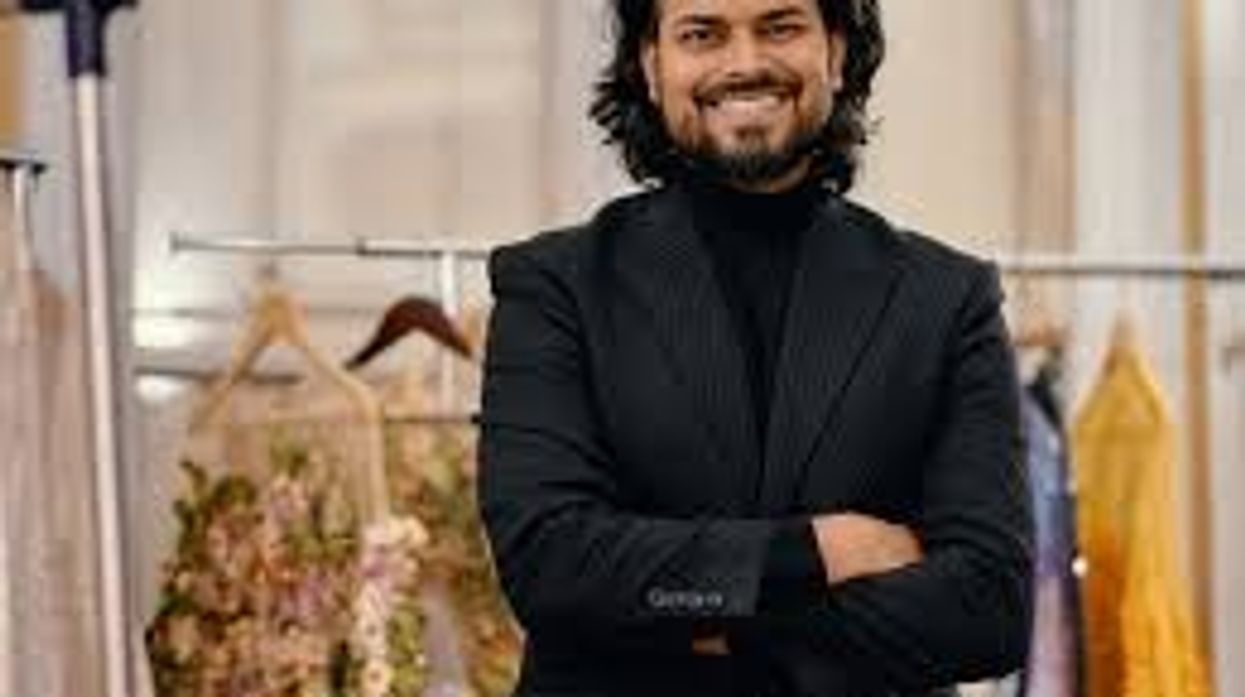His roots lie in India and over the years, France has become his 'karmabhoomi' or workplace, says fashion designer Rahul Mishra, who was conferred with the insignia of Chevalier de l'Ordre des Arts et des Lettres.
Mishra, who debuted with his ready-to-wear collection at the Paris Fashion Week in 2014, said the recognition from the French government is reflective of the beautiful bond that India and France share.
"India is the place where I come from, where I was born, and where I do everything. France is almost like the 'karmabhoomi'. Paris being the global capital of the world. Paris, somehow, gave me that energy to all our dreams. For us, it's just the beginning," the Delhi-based designer told PTI in an interview here.
Paris, the capital of France, is now his "second home", Mishra said. He made his stage debut in 2006 at the Lakme Fashion Week as a budding designer in the Gen Next initiative.
"If we have to create a global brand out of India, Paris is the place where everything has to propagate and begin from. In that way, it's also a beautiful relationship that India and France carry in terms of valuing craftsmanship, beauty, poetry and all that both the countries are enablers in that way. This is a great feeling," he added.
Mishra was on Tuesday conferred with the insignia of Chevalier de l'Ordre des Arts et des Lettres (Knight of the Order of Arts and Letters) at a function at the Residence of France here.
This French government distinction is bestowed upon "persons who have distinguished themselves by their creativity in the field of art, culture, and literature or for their contribution to the influence of arts in France and throughout the world".
Known for marrying slow fashion with traditional Indian crafts, the designer rose to international prominence in 2014 when he won the prestigious International Woolmark Prize in Milan.
A former student of Kanpur University, National Institute of Design in Ahmedabad, and Milan-based Istituto Marangoni, Mishra was invited to showcase his designs as a guest designer at the Paris Haute Couture Week in 2020.
The 43-year-old dedicated the honour to the team behind his eponymous label.
"I'm feeling humbled and grateful. This award is not just for me but for the entire team. Thousands of hands that come together to make a Rahul Mishra piece.
"It's a great recognition... What we had since the beginning believed in the idea of India. How the inclusivity in terms of craft, culture, and communities come together, that's when you make a brand like Rahul Mishra," he added.
It is important for Mishra to be connected to his native country, he said.
"As much as we are a global brand, it's incredibly important for us to be able to see where the clothes are coming from. That way Indian(ness) in the clothes is important. How do you talk about the idea of India if your product is not connected to the roots?"
Ambassador of France to India Emmanuel Lenain, who presented the medal to Mishra for his career and connection to France, praised the designer for bringing his "intricate embroidery and embedded background" to the people of his country.
"I like to think that Rahul has been also inspired by our painters like Monet and Henri Rousseau... When such a great artist is featured at the Paris Fashion Week, we get a lot of inspiration from that," the ambassador said.
According to Lenain, the prospects of India-France ties are "bright".
"There's a lot of creativity in both the countries and respect for the arts and craftsmanship..." he added.
Going forward, Mishra said he wants to be able to employ "a million" people for his label.
"My dream is to be able to multiply the number of people who work with us every year. As unreal as it may sound my dream is to be able to indirectly work with millions of people. So, a million is a number which I am keen for," he said.












